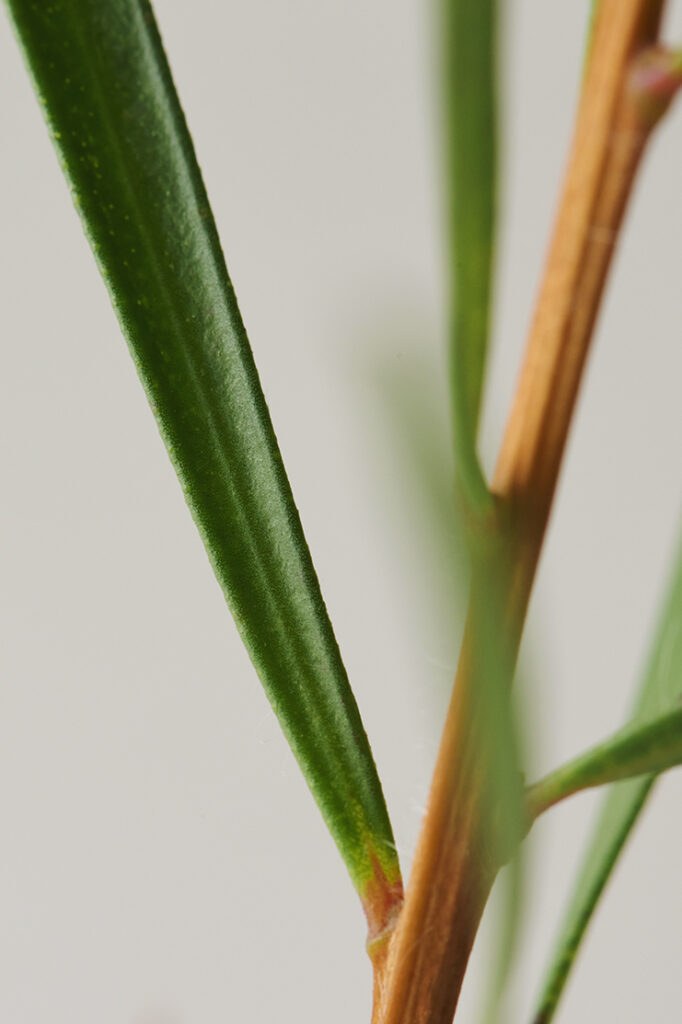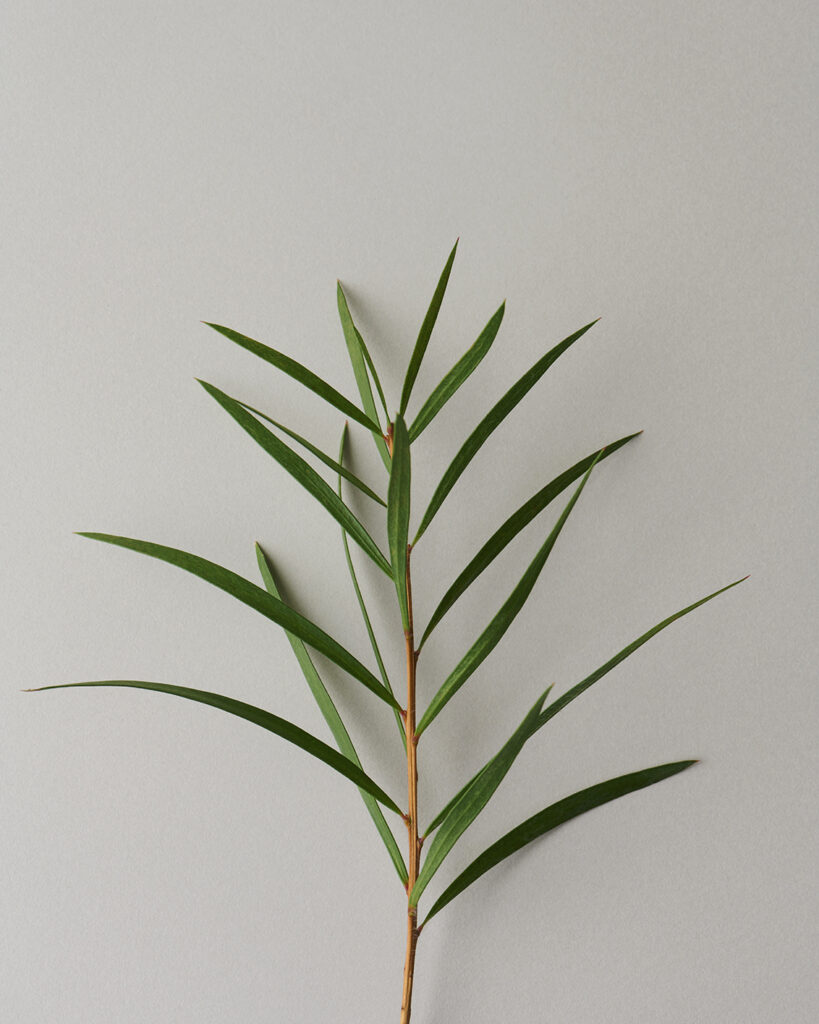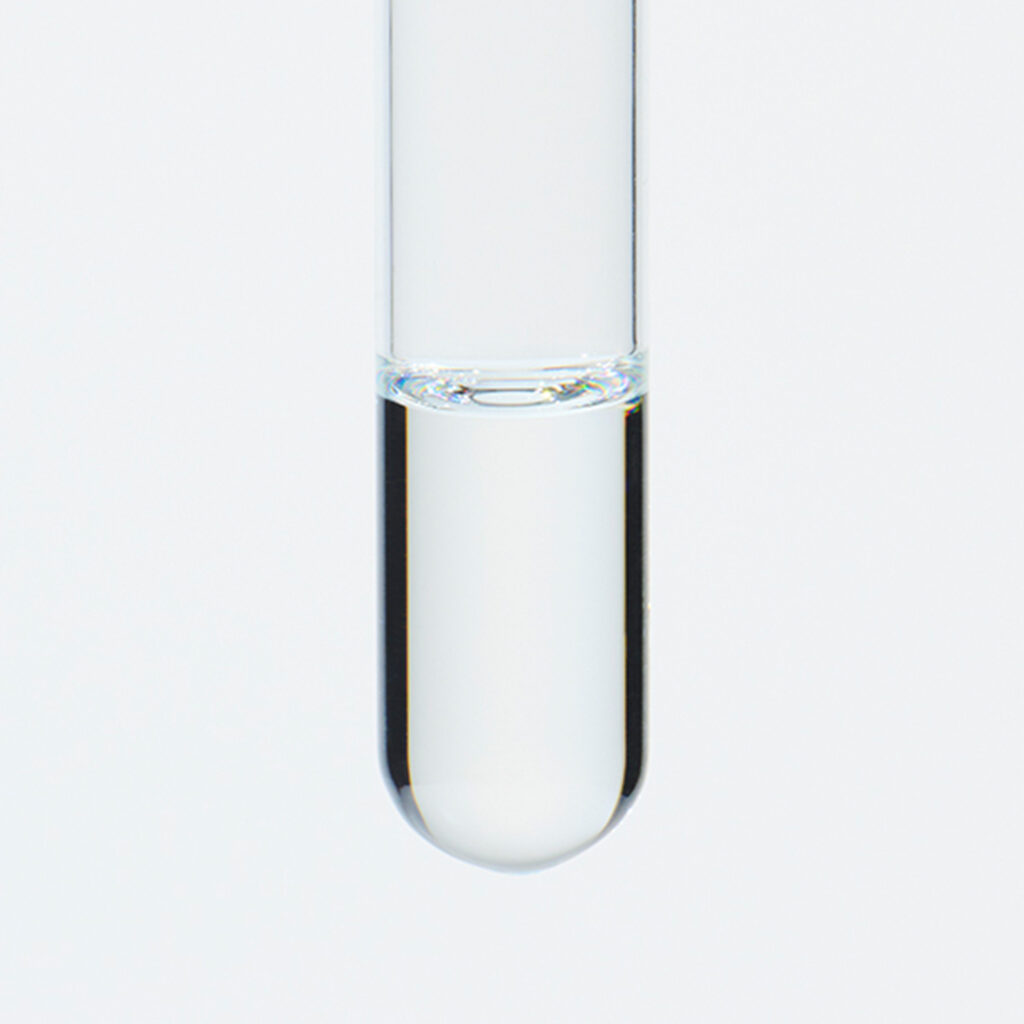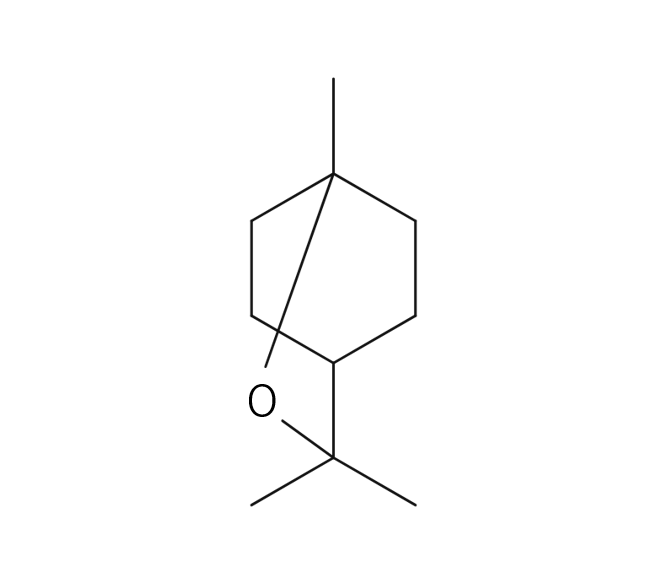About 0.5% to 1% of Niaouli essential oil is obtained by steam distillation from Niaouli leaves, and is colorless to light yellowish brown or greenish brown in color. The primary component is 1,8-cineole, also known as "eucalyptol," which imparts a crisp, cool aroma and characterizes it as the "cineole type." This essential oil carries a freshness reminiscent of camphor, featuring notes of both sweetness and bitterness that combine to create a somewhat unique olfactory impression. Niaouli essential oil pairs harmoniously with slightly sweet and gently scented essential oils, as well as with floral fragrances such as Lemon, Bergamot, Neroli, and Ylang-Ylang. Due to its relatively strong fragrance, it is advisable to add it gradually when blending to achieve a balanced scent.






